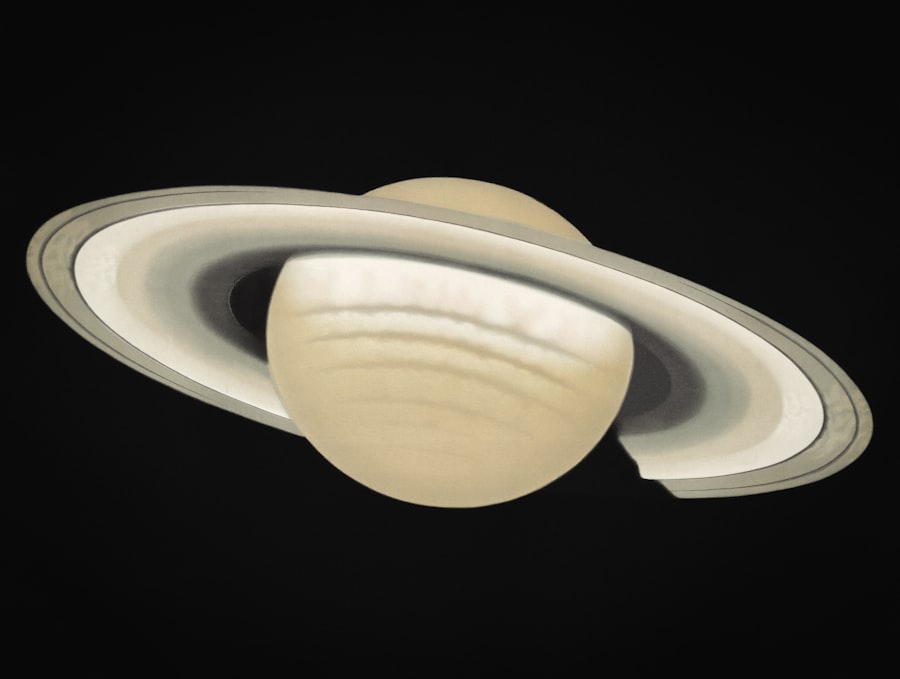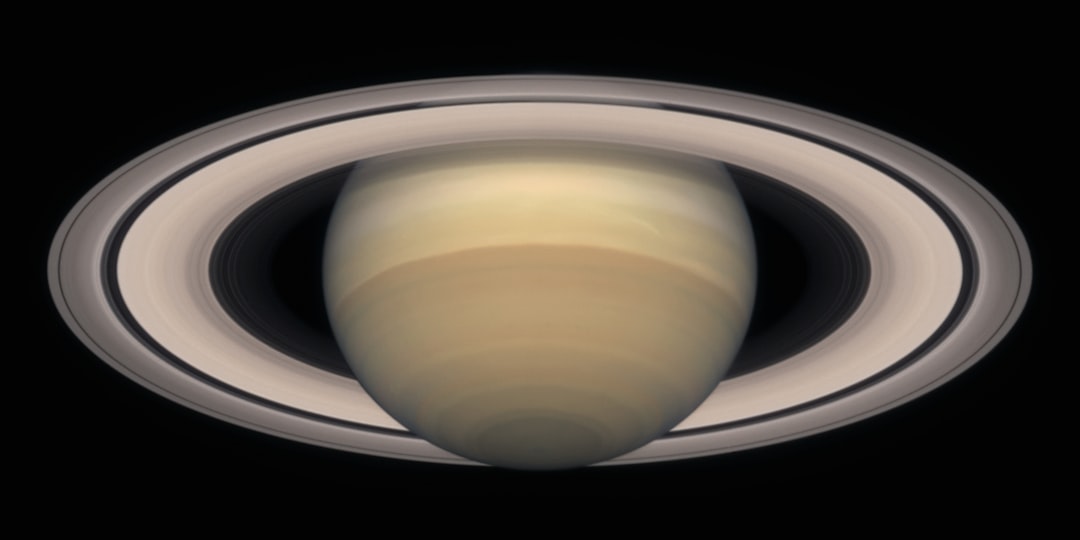The allure of Saturn has captivated humanity for centuries, inspiring both awe and curiosity. This gas giant, with its stunning rings and numerous moons, has become a focal point for scientific inquiry and speculation. The so-called “Saturn Conspiracy” refers to the myriad theories and ideas that have emerged around this planet, ranging from its formation and structure to the potential for extraterrestrial life on its moons.
As scientists continue to explore Saturn, they uncover new mysteries that challenge our understanding of the universe. The intrigue surrounding Saturn is not merely a product of its physical characteristics; it also stems from the cultural and historical significance that this planet holds in human imagination. The fascination with Saturn extends beyond the realm of science.
It has inspired countless myths, artistic expressions, and philosophical musings throughout history. The planet’s striking appearance and unique features have led to various interpretations and theories about its nature and purpose. As researchers delve deeper into the mysteries of Saturn, they not only seek to understand its physical properties but also to unravel the cultural narratives that have shaped humanity’s perception of this celestial body.
The ongoing exploration of Saturn serves as a reminder of the vastness of the universe and the endless possibilities that lie within it.
Key Takeaways
- The Saturn Conspiracy is a fascinating topic that has intrigued scientists and researchers for centuries.
- Saturn’s history and discovery date back to ancient civilizations, with Galileo’s observations marking a significant milestone in our understanding of the planet.
- The mysterious rings of Saturn have captivated astronomers and continue to be a subject of intense study and speculation.
- The enigmatic hexagon on Saturn’s North Pole is a unique and puzzling feature that has puzzled scientists for decades.
- Saturn’s moons are a source of intrigue and mystery, with each one offering valuable insights into the planet’s composition and history.
The History and Discovery of Saturn
The history of Saturn’s discovery is a tale that intertwines with the evolution of astronomy itself. Ancient civilizations observed Saturn long before the advent of modern telescopes, often associating it with deities and celestial phenomena. The Babylonians were among the first to document their observations of Saturn, naming it after their god of agriculture.
Similarly, the Greeks and Romans revered Saturn, linking it to their own mythological figures. These early observations laid the groundwork for future astronomical studies, as humanity sought to understand the nature of the planets that adorned their night skies. The invention of the telescope in the early 17th century marked a significant turning point in the study of Saturn.
Galileo Galilei was one of the first astronomers to observe Saturn through a telescope in 1610, although his observations were limited by the technology of his time. He noted the planet’s peculiar shape but could not discern its rings. It wasn’t until Christiaan Huygens improved upon Galileo’s design in 1655 that the true nature of Saturn’s rings was revealed.
Huygens’ discoveries paved the way for further exploration, leading to a deeper understanding of Saturn’s composition and its place within our solar system.
The Mysterious Rings of Saturn

Saturn’s rings are perhaps its most iconic feature, captivating both scientists and laypeople alike. Composed primarily of ice particles, dust, and rocky debris, these rings vary in thickness and density, creating a stunning visual spectacle. The origin of Saturn’s rings remains a subject of debate among astronomers.
Some theories suggest that they formed from the remnants of moons that were torn apart by Saturn’s gravitational pull, while others propose that they are remnants from the early solar system. Regardless of their origin, the rings serve as a testament to the dynamic processes at play within our solar system. The complexity of Saturn’s rings is further enhanced by their intricate structure.
They are divided into several distinct sections, each with unique characteristics. The A ring, B ring, and C ring are the most prominent, but there are also fainter rings that contribute to the overall beauty of this planetary system. The presence of gaps within the rings, such as the Cassini Division, adds to their intrigue, suggesting that gravitational interactions with Saturn’s moons play a crucial role in shaping their structure.
As scientists continue to study these rings, they uncover new insights into planetary formation and the forces that govern celestial bodies.
The Enigmatic Hexagon on Saturn’s North Pole
| Aspect | Details |
|---|---|
| Location | Saturn’s North Pole |
| Shape | Hexagonal |
| Size | Approximately 25,000 kilometers in diameter |
| Duration | Present for at least four decades |
| Atmospheric Conditions | High-speed winds and jet streams |
One of Saturn’s most puzzling features is the hexagonal cloud pattern located at its north pole. This striking geometric formation has intrigued scientists since it was first observed by the Voyager spacecraft in the early 1980s. The hexagon measures approximately 14,500 kilometers (9,000 miles) across and is characterized by its six-sided shape, which is unlike any other atmospheric phenomenon observed in our solar system.
Researchers have speculated about the mechanisms behind this unusual structure, with some suggesting that it may be related to atmospheric dynamics and fluid motion. The hexagon’s stability is another aspect that has captured scientific interest. Unlike typical weather patterns that change over time, this hexagonal formation has remained remarkably consistent for decades.
Some scientists believe that it may be a result of differential rotation within Saturn’s atmosphere, where varying wind speeds create a stable vortex structure. This phenomenon raises questions about the nature of atmospheric dynamics on gas giants and how they differ from those on terrestrial planets. As researchers continue to investigate this enigmatic feature, they hope to gain a deeper understanding of not only Saturn but also other gas giants in our solar system.
Saturn’s Moons: A Source of Intrigue and Mystery
Saturn boasts an impressive collection of moons, each with its own unique characteristics and potential for scientific discovery. With over 80 confirmed moons, including Titan—the second-largest moon in the solar system—Saturn presents a rich tapestry for exploration. Titan is particularly intriguing due to its dense atmosphere and surface lakes composed of liquid methane and ethane.
This unique environment raises questions about the potential for life beyond Earth and has made Titan a prime target for future exploration. In addition to Titan, other moons such as Enceladus have garnered significant attention from scientists. Enceladus is known for its geysers that spew water vapor and organic compounds into space, suggesting the presence of a subsurface ocean beneath its icy crust.
The diversity among Saturn’s moons highlights the complexity of celestial bodies within our solar system and underscores the importance of continued exploration to uncover their secrets.
The Cassini-Huygens Mission: Uncovering the Secrets of Saturn

The Cassini-Huygens mission stands as one of the most ambitious endeavors in planetary exploration history. Launched in 1997, this collaborative project between NASA, ESA (European Space Agency), and ASI (Italian Space Agency) aimed to study Saturn and its moons in unprecedented detail. After a seven-year journey through space, Cassini entered orbit around Saturn in 2004, providing scientists with a wealth of data that transformed our understanding of this gas giant.
Cassini captured stunning images that revealed intricate details about the ring structure and dynamics while also providing insights into atmospheric phenomena such as storms and winds. The Huygens probe, which detached from Cassini and landed on Titan in 2005, provided invaluable data about this moon’s surface and atmosphere.
The findings from this mission have not only expanded scientific knowledge but have also inspired future generations of astronomers and space enthusiasts.
Theories and Speculations Surrounding Saturn’s Secrets
As scientists continue to study Saturn, various theories and speculations have emerged regarding its secrets. One prominent theory suggests that Saturn may harbor conditions suitable for life within its moons’ subsurface oceans. This idea has gained traction due to discoveries made by missions like Cassini-Huygens, which revealed evidence of water vapor plumes on Enceladus and complex organic molecules on Titan.
These findings have led researchers to consider whether life could exist in these extreme environments. Another area of speculation revolves around Saturn’s formation and evolution within the solar system. Some scientists propose that Saturn may have played a crucial role in shaping the orbits and characteristics of other celestial bodies through gravitational interactions.
This theory raises questions about how gas giants influence planetary systems and what implications this has for our understanding of planetary formation processes across different star systems.
Saturn in Mythology and Ancient Cultures
Saturn’s influence extends far beyond scientific inquiry; it has also played a significant role in mythology and ancient cultures throughout history. In Roman mythology, Saturn was associated with agriculture and harvests, often depicted as a benevolent figure who brought prosperity to humanity. This connection to agriculture reflects humanity’s reliance on celestial bodies for navigation and timekeeping, as well as their impact on seasonal cycles.
In addition to Roman mythology, various cultures have attributed different meanings to Saturn based on their observations of its movements in the night sky. In astrology, Saturn is often associated with discipline, responsibility, and structure—qualities that resonate with its slow orbit around the sun. These cultural interpretations highlight humanity’s enduring fascination with celestial bodies and their influence on human life.
The Role of Saturn in Modern Science and Astronomy
In contemporary science and astronomy, Saturn continues to be a focal point for research and exploration. Its unique characteristics provide valuable insights into planetary formation processes and atmospheric dynamics within gas giants. Researchers utilize advanced telescopes and space missions to study Saturn’s atmosphere, rings, and moons in greater detail than ever before.
Moreover, Saturn serves as a benchmark for understanding other exoplanets discovered beyond our solar system. By studying its features and behaviors, scientists can draw comparisons with distant worlds that exhibit similar characteristics. This comparative approach enhances our understanding of planetary systems across the universe while also informing future exploration missions aimed at uncovering more about gas giants beyond our solar neighborhood.
The Future of Saturn Exploration: What Lies Ahead
Looking ahead, the future of Saturn exploration holds great promise as technology advances and new missions are proposed. Scientists are eager to build upon the discoveries made by Cassini-Huygens by sending additional probes to study specific moons like Titan and Enceladus more closely. Future missions may focus on investigating subsurface oceans or analyzing atmospheric compositions in greater detail.
Additionally, advancements in telescope technology may allow astronomers to observe Saturn from Earth with unprecedented clarity, enabling them to monitor changes over time without relying solely on spacecraft data. As humanity continues its quest for knowledge about our solar system and beyond, Saturn will undoubtedly remain at the forefront of scientific inquiry.
The Ongoing Quest to Unravel the Mysteries of Saturn
The quest to unravel the mysteries of Saturn is an ongoing journey that intertwines science, mythology, and human curiosity. From ancient civilizations’ reverence for this gas giant to modern-day explorations through missions like Cassini-Huygens, humanity’s fascination with Saturn endures. As researchers continue to uncover new insights into its rings, moons, and atmospheric phenomena, they not only expand our understanding of this remarkable planet but also inspire future generations to look up at the night sky with wonder.
The mysteries surrounding Saturn serve as a reminder of how much there is yet to learn about our universe. Each discovery brings new questions to light while deepening humanity’s connection to celestial bodies beyond our own planet. As scientists forge ahead into uncharted territory—both literally and metaphorically—the ongoing quest to understand Saturn will undoubtedly yield further revelations that challenge our perceptions of life beyond Earth and our place within the cosmos.
The Saturn Conspiracy delves into the intriguing theories surrounding the planet Saturn and its potential influence on human consciousness and ancient civilizations. For those interested in exploring more about the mysteries of the cosmos and how they intertwine with human history, a related article can be found at
